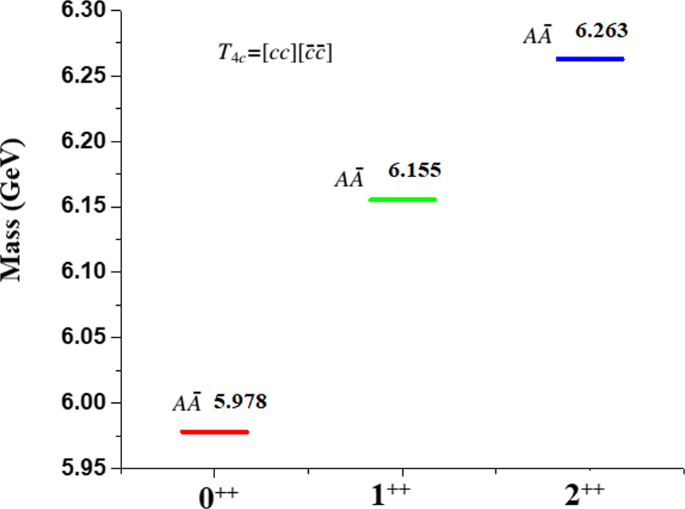四夸克中的旋转和振动
IF 1.7
4区 物理与天体物理
Q2 PHYSICS, MULTIDISCIPLINARY
引用次数: 0
摘要
提出了一种利用无限维代数技术求四夸克配对哈密顿量精确解的新方法。基于现象学衍生的潜在四夸克候选者,对过渡阶段所涉及的参数进行了校准。我们的研究表明,与其他方法相比,旋转和振动过渡理论与其他方法在重四夸克上的研究结果有较好的一致性。为了说明这一概念,我们计算了几种四夸克的谱,即粲、底、底-粲、开粲和底体系,并将它们与其他粒子的谱进行了对比。本文章由计算机程序翻译,如有差异,请以英文原文为准。

Rotation and Vibration in Tetraquarks
A novel approach is introduced for obtaining precise solutions of the pairing Hamiltonian for tetraquarks, which utilizes an algebraic technique in infinite dimensions. The parameters involved in the transition phase are calibrated based on potential tetraquark candidates derived from phenomenology. Our investigation shows that the rotation and vibration transitional theory delivers a reasonable agreement with other works for heavy tetraquarks compared to other methods. To illustrate the concept, we compute the spectra of several tetraquarks, namely charm, bottom, bottom–charm and open charm and bottom systems, and contrast them with those of other particles.
求助全文
通过发布文献求助,成功后即可免费获取论文全文。
去求助
来源期刊

Few-Body Systems
物理-物理:综合
CiteScore
2.90
自引率
18.80%
发文量
64
审稿时长
6-12 weeks
期刊介绍:
The journal Few-Body Systems presents original research work – experimental, theoretical and computational – investigating the behavior of any classical or quantum system consisting of a small number of well-defined constituent structures. The focus is on the research methods, properties, and results characteristic of few-body systems. Examples of few-body systems range from few-quark states, light nuclear and hadronic systems; few-electron atomic systems and small molecules; and specific systems in condensed matter and surface physics (such as quantum dots and highly correlated trapped systems), up to and including large-scale celestial structures.
Systems for which an equivalent one-body description is available or can be designed, and large systems for which specific many-body methods are needed are outside the scope of the journal.
The journal is devoted to the publication of all aspects of few-body systems research and applications. While concentrating on few-body systems well-suited to rigorous solutions, the journal also encourages interdisciplinary contributions that foster common approaches and insights, introduce and benchmark the use of novel tools (e.g. machine learning) and develop relevant applications (e.g. few-body aspects in quantum technologies).
 求助内容:
求助内容: 应助结果提醒方式:
应助结果提醒方式:


